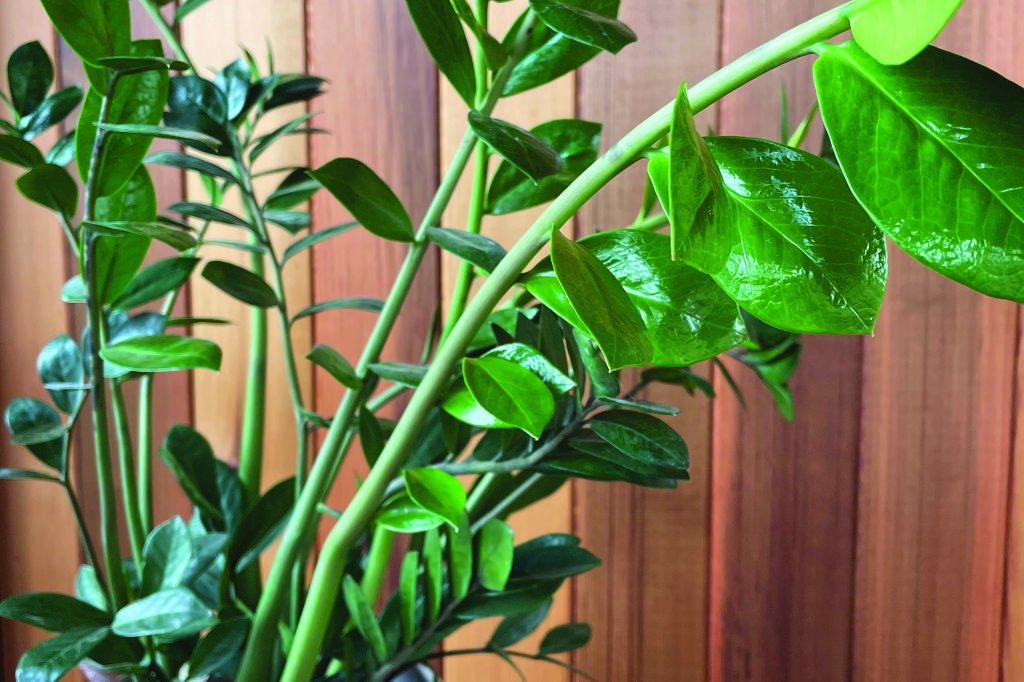Life
 Photo by Claire Smalley.
Photo by Claire Smalley.
Nurturing Tips for New Plant Parents
March 1, 2022 @ 10:00am
Until five years ago, every plant I ever owned died. When I learned most house plants can live forever, I was determined to cultivate a green thumb. Now, after years of more than 40 plants and zero casualties, I want to share the most basic and helpful things I’ve learned about being a plant parent.
WITH WATER, LESS IS MORE
You will kill a plant much faster by overwatering than underwatering. Consistently watering a plant more frequently than needed will cause root rot, a disease that contaminates the soil and pot. Alternatively, if you consistently underwater most plants will show signs of distress before they are doomed.
Your plant’s watering needs depend on a variety of factors, so rather than following a schedule use a wood chopstick to determine how quickly your plant dries out. Push the entire chopstick into your plant’s soil. After about 20 minutes, pull out the chopstick and feel how wet it is, how far down. Some plants (like succulents and other desert plants) like to dry out completely between waterings while others prefer to stay slightly damp (like tradescantias).
When you water your plant — no matter the type — soak it thoroughly. Avoid giving plants small amounts of water at a time, as this will create unevenly wet soil which makes it difficult to judge when the plant needs more. Root rot doesn’t occur from a single watering in a well-draining pot, so drench the plant until water flows out of the bottom.
The signs of over and underwatering can be similar, so I always err on the side of underwatering until I get to know a new plant.
CHECK YOUR WINDOWS
The amount of natural light in your home depends largely on the orientation of your windows. Windows that face south provide the most direct light for the longest period of the day. If you have an unobstructed south-facing window, only desert plants like succulents and snake plants may thrive in the windowsill. That said, many plants would be happy below the window (out of direct light) or a few feet away.
East-facing windows offer direct morning light and west-facing windows provide intense afternoon light. North-facing windows provide indirect light throughout the day and are best for low-light and shade plants.
To determine if you get direct sunlight, hold a piece of paper in front of a window and place your hand between the window and the paper so it casts a shadow on the paper. The sharper and darker the shadow, the more direct the light. Note how the shadow changes if you take a step away or to the side of the window.
If your plant becomes “leggy,” meaning the stems begin to stretch without growing leaves, your plant is not getting enough light. A plant receiving too much light might drop its leaves, appear dry and crisp or even develop sunburns that look like discolored patches. Finally, plants will often grow toward the conditions they want. If you notice a plant growing toward the sun, it might need more light.
Try moving your plants to different windows in your home until you find the right spot for each plant.
PRIORITIZE PROPER POTS
When choosing a container for your plants be sure to select one with a drainage hole. Without proper drainage your plant could sit in a puddle that can quickly lead to root rot. If you use a container that doesn’t have drainage (a cachepot) you can keep the plant in its plastic growing container and place the whole thing directly in the cachepot. That way you can easily remove the plant to dump excess water.
Eventually, all potted plants need to be repotted either because they have outgrown their containers or because they have used all the nutrients in their soil. If you notice roots coming out of the drainage hole in the bottom of a pot, your plant might be root-bound. You can also check the roots by gently removing the plant from the pot.
Plants can become root-bound when the roots run out of space to grow and begin to circle around inside the pot. When you repot a root-bound plant, use clean pruning shears or a knife to make a few vertical cuts in the root ball to help break it up and repot with fresh potting soil. Use a pot that is an inch or two larger in diameter than the old one. Be careful not to put plants in pots that are too big as this can lead to uneven watering.
Being a good plant parent takes practice. You will likely kill a few while you’re learning but don’t give up on a plant that looks stressed. Many popular houseplants grow like weeds in their native environments and can recover from stress if given the right care.
3 HOUSEPLANTS FOR BEGINNERS
Snake plants (Dracaena trifasciata) are notorious for tolerating low-light conditions but if given full, direct light can quickly grow to several feet tall. They are drought tolerant and love to be ignored. If you underwater a snake plant the leaves will look shriveled and you can easily course-correct by watering more frequently.
ZZ plants (Zamioculcas zamiifolia) are perfect for a bright, north-facing window. They are drought tolerant so be careful not to overwater.
Nerve plants (Fittonia albivenis) do well in most light conditions except direct light, so avoid south-facing windows. Nerve plants come in a few colors and need a decent amount of water. They are great for beginners because they show early signs of distress: When they need water, the leaves become soft and wilted. If they get too much sun, they drop leaves.
For more tips and resources, check out my fave plant parenting podcast “Bloom and Grow Radio” at
bloomandgrowradio.com or @bloomandgrowradiopod on Instagram. Episode 46: “Understanding Natural Light” was an especially big game changer for me.
If you’re ready to become a plant parent, check out Grounded Plants, an online plant shop owned by D.C. locals Mignon Hemsley and Danuelle Doswell at grounded-plants.com. You can also follow them on Instagram @groun.ded.







